Welcome to SIXT.VN, your go-to source for exploring the captivating culture and attractions of Vietnam! If you’re curious about the mesmerizing blend of history and artistry, you might ask, How Was The Giant Bell At Co Le Pagoda Cast? This colossal bronze bell, a symbol of resilience and reverence, was created through a fascinating process involving community devotion and ingenious techniques. Let’s dive into the story of this legendary bell, offering insights into Vietnamese heritage and spiritual landmarks, and plan your unforgettable Vietnam journey with SIXT.VN!
1. What is the History Behind Co Le Pagoda and its Giant Bell?
The history behind Co Le Pagoda and its giant bell is rich and fascinating, blending spiritual devotion with cultural resilience. Initially established during the Ly Dynasty and known as “Than Quang Tu,” the pagoda was dedicated to both Buddha and Saint Nguyen Minh Khong. Over time, the original wooden structure deteriorated, leading to a significant renovation in 1902 led by Abbot Pham Quang Tuyen. This renovation introduced a unique architectural style that merges traditional Buddhist elements with Gothic designs.
The giant bronze bell, known as Dai Hong Chung, was cast in 1936. According to historical accounts, numerous Buddhist followers contributed gold jewelry, including rings and bracelets, which were melted down and incorporated into the bell as an act of devotion. Measuring 4.2 meters in height and 2.2 meters in diameter, with an 8-centimeter-thick bronze shell, the bell is one of Vietnam’s largest. During the war, fearing its destruction, locals submerged the bell in a nearby lake. It was recovered in 1954 and remains a symbol of perseverance. The pagoda was recognized as a National Architectural Heritage Site in 1988, underscoring its cultural and historical significance. Each year, the Co Le Pagoda Festival honors Saint Nguyen Minh Khong with traditional ceremonies and cultural performances.
2. What Makes Co Le Pagoda’s Architecture Unique?
Co Le Pagoda’s architecture is unique due to its distinctive blend of Eastern and Western styles, creating a visually stunning and spiritually significant landmark. The pagoda follows the traditional Vietnamese layout of “Tien Phat, Hau Thanh” (Buddha in the front, Saints in the back), but it incorporates elements reminiscent of Gothic cathedrals, such as vaulted ceilings and colorful frescoed walls.
The fusion of these architectural styles is what sets Co Le Pagoda apart. The Gothic influence is enhanced by Vietnamese-inspired decorative motifs, carvings, and reliefs that adorn the arched ceilings and walls, creating a harmonious blend of cultures. One of the most striking features is the Nine-story Lotus Tower, standing 32 meters tall and built with nine stacked lotus petals, symbolizing the Buddhist cosmology’s nine celestial realms. A spiral staircase with 98 steps leads to the top, providing panoramic views of the surrounding area. This unique architectural combination makes Co Le Pagoda a remarkable cultural and historical site in Vietnam.
3. How Was the Giant Bell at Co Le Pagoda Cast?
The giant bell at Co Le Pagoda was cast using traditional methods that involved significant community participation and reverence. According to historical records, the Dai Hong Chung bell was created in 1936, with many Buddhist followers donating gold jewelry, including rings and bracelets, to be melted into the bronze.
The casting process likely involved creating a mold using clay and other traditional materials. Molten bronze, mixed with the donated gold, would then be poured into the mold. Given the bell’s immense size—4.2 meters tall and 2.2 meters in diameter—this would have been a complex and meticulously coordinated effort. Once cooled, the mold would be broken away, revealing the giant bell. The bell’s surface would then be refined with intricate carvings and designs. Submerging the bell in a lake during wartime to protect it underscores its cultural significance and the community’s commitment to preserving their heritage. Today, the bell stands as a symbol of resilience and historical artistry.
4. What Materials Were Used to Construct the Giant Bell?
The giant bell at Co Le Pagoda, known as Dai Hong Chung, was primarily constructed using bronze, a metal alloy traditionally made of copper and tin. However, what makes this bell particularly special is the inclusion of gold. According to historical records, Buddhist followers contributed gold jewelry, such as rings and bracelets, which were melted down and added to the bronze during the casting process.
This addition of gold not only enhanced the bell’s aesthetic appeal but also added to its spiritual significance, reflecting the community’s devotion. The bell measures 4.2 meters in height, 2.2 meters in diameter, and has a bronze shell that is 8 centimeters thick, making it one of Vietnam’s largest ancient bronze bells. The precise ratio of copper, tin, and gold used in the bell’s construction would have been carefully calculated to ensure the bell produced the desired resonance and tone. The use of these specific materials highlights the craftsmanship and spiritual value associated with the bell.
5. What Was the Significance of Submerging the Bell in the Lake?
The act of submerging the giant bell of Co Le Pagoda in a lake held profound significance during Vietnam’s resistance war. Cast in 1936, the Dai Hong Chung bell quickly became a symbol of cultural and spiritual importance. When war broke out, local communities feared that invading forces would destroy or confiscate the bell, thereby stripping away a vital part of their heritage.
To protect it, the bell was carefully submerged in a lake near the pagoda. This act demonstrated the community’s commitment to preserving their cultural and religious artifacts at all costs. By hiding the bell underwater, they ensured it would not be destroyed or taken by the invaders. The bell remained hidden until 1954, after the war ended, when it was retrieved and placed on a stone pedestal. Today, it stands as a powerful reminder of resilience, historical continuity, and the community’s dedication to safeguarding their traditions.
6. What Role Did the Community Play in Casting the Bell?
The community played a crucial role in casting the giant bell at Co Le Pagoda, demonstrating a profound sense of collective devotion and participation. According to historical accounts, the Dai Hong Chung bell was cast in 1936, and a significant aspect of its creation was the contribution of gold jewelry from numerous Buddhist followers.
These devotees donated items like rings and bracelets, which were melted down and incorporated into the bronze mixture used to cast the bell. This act of donation was not merely a financial contribution but a deeply spiritual one, signifying the community’s shared commitment to their faith and heritage. The casting of such a massive bell—measuring 4.2 meters tall and 2.2 meters in diameter—would have required considerable manpower and coordination. Local artisans and laborers likely collaborated closely, pooling their skills and resources to complete the project. The community’s involvement highlights the bell’s cultural importance.
7. Why Has the Giant Bell Never Been Rung?
Despite its imposing size and sacred significance, the giant bell at Co Le Pagoda, known as Dai Hong Chung, has never been rung, adding an element of mystique to its already fascinating history. There are several possible reasons for this decision, rooted in a combination of practical considerations and cultural beliefs.
Given the bell’s immense size—4.2 meters tall and 2.2 meters in diameter—ringing it would likely produce an extremely loud sound that could potentially damage the bell itself or the surrounding structures of the pagoda. Moreover, some believe that ringing such a large bell requires a specific level of spiritual purity or a significant occasion, and doing so without proper cause could be seen as disrespectful. The bell’s symbolic value as a historical artifact and a testament to the community’s resilience may also contribute to the decision not to ring it. Preserving the bell in its current state ensures its longevity and continued cultural significance for future generations.
8. How Does the Giant Bell Reflect Vietnamese Culture and History?
The giant bell at Co Le Pagoda profoundly reflects Vietnamese culture and history through its creation, preservation, and symbolic significance. Cast in 1936, the Dai Hong Chung bell embodies the community’s deep-rooted Buddhist faith, evidenced by the donation of gold jewelry from devotees, which was melted into the bronze.
During the resistance war, the bell was submerged in a lake to protect it from potential destruction by invaders, illustrating the community’s commitment to preserving their cultural and religious heritage. Measuring 4.2 meters in height and 2.2 meters in diameter, the bell stands as a testament to Vietnamese craftsmanship and artistic skill. Its unique history and imposing presence serve as a reminder of the country’s resilience and strength through periods of conflict. Recognized as part of a National Architectural Heritage Site, the bell symbolizes the blending of spiritual devotion, cultural pride, and historical continuity.
9. What Are Some Other Notable Features of Co Le Pagoda?
Besides the famed giant bell, Co Le Pagoda boasts several notable features that highlight its unique architectural and cultural significance. The pagoda’s design is a distinctive blend of Eastern and Western styles, merging traditional Vietnamese Buddhist elements with Gothic influences. This is evident in the vaulted ceilings and colorful frescoed walls, reminiscent of Catholic cathedrals, while maintaining the traditional “Tien Phat, Hau Thanh” layout.
The Nine-story Lotus Tower, standing 32 meters tall, is another striking feature. Constructed with nine stacked lotus petals, it symbolizes the nine celestial realms in Buddhist cosmology. A spiral staircase with 98 steps leads to the top, offering panoramic views of the pagoda grounds and surrounding countryside. The pagoda complex includes various structures such as the main gate, an arched bridge, the three-entrance gate (Tam Quan), the Buddhist assembly hall, the temple of Tran Hung Dao (Linh Quang Tu), and the Mother Goddess shrine (Phu Mau). These elements collectively contribute to Co Le Pagoda’s recognition as a National Architectural Heritage Site, celebrated for its historical and artistic value.
10. How Can I Visit Co Le Pagoda and See the Giant Bell?
Visiting Co Le Pagoda to see the giant bell is a rewarding experience for anyone interested in Vietnamese culture and history. The pagoda is located in Nam Dinh province, which is approximately 90 kilometers (about 56 miles) southeast of Hanoi. To plan your visit, consider these options:
Transportation:
- From Hanoi: You can hire a private car or take a bus from Hanoi to Nam Dinh. Buses are available from major bus stations like Giap Bat or My Dinh.
- Local Transport: Once in Nam Dinh, you can take a taxi or local bus to Co Le Pagoda.
Accommodation:
- Nam Dinh offers a range of hotels and guesthouses. It’s advisable to book in advance, especially during festival times.
Things to Do:
- Explore the pagoda complex, including the Nine-story Lotus Tower and other unique architectural features.
- Visit during the Co Le Pagoda Festival (from the 13th to the 16th day of the ninth lunar month) to experience traditional ceremonies and cultural performances.
- Respect the sacredness of the site by dressing modestly and following local customs.
SIXT.VN Services:
- For a hassle-free experience, SIXT.VN offers tour packages that include transportation, accommodation, and guided tours to Co Le Pagoda.
- We provide airport transfer services from Hanoi, ensuring a smooth and comfortable journey.
- Our local experts can assist with booking accommodations and arranging visits to other nearby attractions.
With careful planning and the assistance of SIXT.VN, your visit to Co Le Pagoda and its magnificent giant bell will be an unforgettable cultural adventure.
11. What is the Significance of the Nine-Story Lotus Tower at Co Le Pagoda?
The Nine-Story Lotus Tower at Co Le Pagoda holds profound significance as a symbol of Buddhist cosmology and spiritual ascension. Standing at an impressive 32 meters tall, this tower is constructed with nine stacked lotus petals, each layer representing one of the nine celestial realms in Buddhist teachings.
The lotus flower itself is a powerful emblem in Buddhism, signifying purity, enlightenment, and spiritual awakening, as it rises undefiled from muddy waters. Ascending the tower via a spiral staircase with 98 steps symbolizes a journey through these celestial realms, offering devotees and visitors a chance to reflect on their spiritual path. The panoramic views from the top of the tower provide a sense of enlightenment and connection with the surrounding landscape, reinforcing the pagoda’s role as a place of contemplation and spiritual growth. The Nine-Story Lotus Tower is not just an architectural marvel.
12. What are the Cultural and Spiritual Traditions Associated with Co Le Pagoda?
Co Le Pagoda is steeped in cultural and spiritual traditions that reflect its long history and significance in the local community. One of the most important traditions is the annual Co Le Pagoda Festival, held from the 13th to the 16th day of the ninth lunar month, commemorating Saint Nguyen Minh Khong.
During this festival, visitors can participate in various Buddhist ceremonies and processions, which include chanting, offerings, and prayers led by monks. Traditional spiritual performances, such as music and dance, are also featured, adding to the festive atmosphere. Cultural and folk games, like dragon boat racing on the river surrounding the pagoda, provide entertainment and promote community spirit. Additionally, the pagoda follows the “Tien Phat, Hau Thanh” layout, honoring both Buddha and local saints, and incorporates unique architectural elements that blend Eastern and Western styles, showcasing its cultural diversity. The recognition of the Co Le Pagoda Festival as a National Intangible Cultural Heritage in 2023 underscores its enduring importance to Vietnamese culture and spirituality.
 co le pagoda.jpg
co le pagoda.jpg
Co Le Pagoda is a unique spiritual tourism destination in Nam Dinh, blending traditional and modern elements harmoniously.
13. What Challenges Did the Builders Face in Constructing the Giant Bell?
Constructing the giant bell at Co Le Pagoda, known as Dai Hong Chung, presented numerous challenges that required ingenuity, skill, and community collaboration. Casting such a massive bell—measuring 4.2 meters in height and 2.2 meters in diameter—demanded a significant amount of resources and technical expertise.
One of the primary challenges would have been creating a mold capable of withstanding the immense heat and pressure of molten bronze. Ensuring the mold’s structural integrity to prevent collapse during the casting process was crucial. Obtaining the necessary amount of bronze, a metal alloy made of copper and tin, would have been another logistical hurdle. Coordinating the melting and pouring of the molten bronze into the mold required precise timing and synchronization to ensure a uniform casting. The addition of gold jewelry, donated by Buddhist followers, added another layer of complexity to the process. Successfully integrating these precious metals into the bronze required careful monitoring and adjustments to the melting process.
14. How Did the Architectural Design of Co Le Pagoda Influence the Bell’s Creation?
The architectural design of Co Le Pagoda significantly influenced the creation and placement of its giant bell, Dai Hong Chung. The pagoda’s unique blend of Eastern and Western architectural styles provided a distinctive backdrop for the bell, enhancing its cultural and spiritual significance.
The pagoda follows the traditional Vietnamese layout of “Tien Phat, Hau Thanh” (Buddha in the front, Saints in the back) but incorporates elements reminiscent of Gothic cathedrals, such as vaulted ceilings and colorful frescoed walls. This fusion of styles likely inspired the bell’s design, ensuring it harmonized with the pagoda’s overall aesthetic. The bell’s immense size—4.2 meters tall and 2.2 meters in diameter—required a sturdy and prominent location within the pagoda complex. Placing it on a stone pedestal allowed the bell to be both a visual and symbolic focal point. The Nine-story Lotus Tower, another prominent feature of the pagoda, further emphasizes the verticality and spiritual aspiration reflected in the bell’s towering presence.
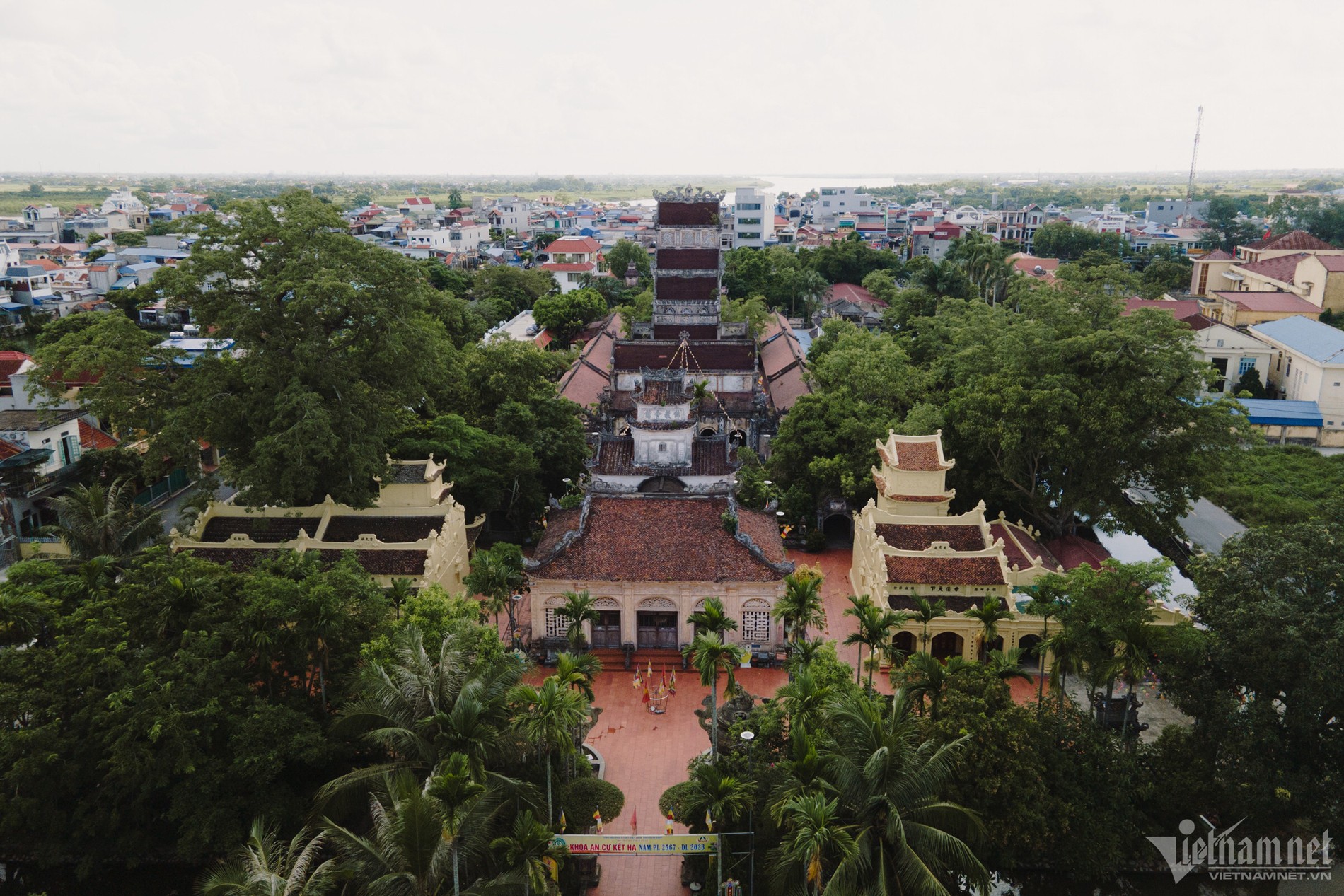 co le pagoda.jpg1.jpg
co le pagoda.jpg1.jpg
15. What is the Current Condition of the Giant Bell and Efforts to Preserve It?
The current condition of the giant bell at Co Le Pagoda, Dai Hong Chung, is a testament to its enduring construction and the ongoing efforts to preserve it as a significant cultural artifact. After being cast in 1936 and submerged in a lake during the war to protect it from destruction, the bell was recovered in 1954 and placed on a stone pedestal, where it remains today.
Despite its age and historical journey, the bell is generally well-preserved, thanks to the durable nature of bronze and the consistent maintenance efforts. Regular inspections are conducted to monitor its structural integrity and surface condition. Measures are taken to prevent corrosion and environmental damage. The pagoda’s recognition as a National Architectural Heritage Site ensures that it receives funding and support for preservation activities. Local authorities and cultural organizations collaborate to implement conservation strategies that protect the bell and its surrounding environment.
16. How Did the Locals Protect the Bell During the War?
During the war, the locals demonstrated extraordinary dedication and ingenuity in protecting the giant bell at Co Le Pagoda, Dai Hong Chung, from potential destruction or confiscation by enemy forces. Recognizing the bell’s immense cultural and spiritual value, they devised a plan to hide it from harm’s way.
The most significant action taken was to submerge the bell in a nearby lake. This involved carefully moving the massive bell—measuring 4.2 meters tall and 2.2 meters in diameter—to the lake and lowering it into the water. The community likely used ropes, pulleys, and manpower to accomplish this challenging task. By submerging the bell, they effectively concealed it from view, making it nearly impossible for invaders to find or damage it. Local residents kept the location of the submerged bell a secret, ensuring its safety throughout the war. This act of bravery and community solidarity ensured the preservation of a vital piece of their heritage, which was later recovered and restored to its place of honor at the pagoda.
17. What Types of Offerings Are Made at Co Le Pagoda Today?
At Co Le Pagoda today, various types of offerings are made, reflecting the deep-rooted Buddhist traditions and the local community’s reverence for the site. These offerings serve as expressions of devotion, gratitude, and requests for blessings.
Flowers are a common offering, symbolizing purity, beauty, and the transient nature of life. Fresh flowers, such as lotus blossoms and chrysanthemums, are often placed at the altars. Fruits are another popular offering, representing prosperity and abundance. A variety of fruits, including bananas, oranges, and apples, are arranged on trays as a sign of respect. Incense is burned to create a fragrant atmosphere and to carry prayers to the heavens. The smoke is believed to purify the space and connect the worshippers with the spiritual realm. Food offerings, such as vegetarian dishes and rice cakes, are also presented, particularly during festivals and special ceremonies.
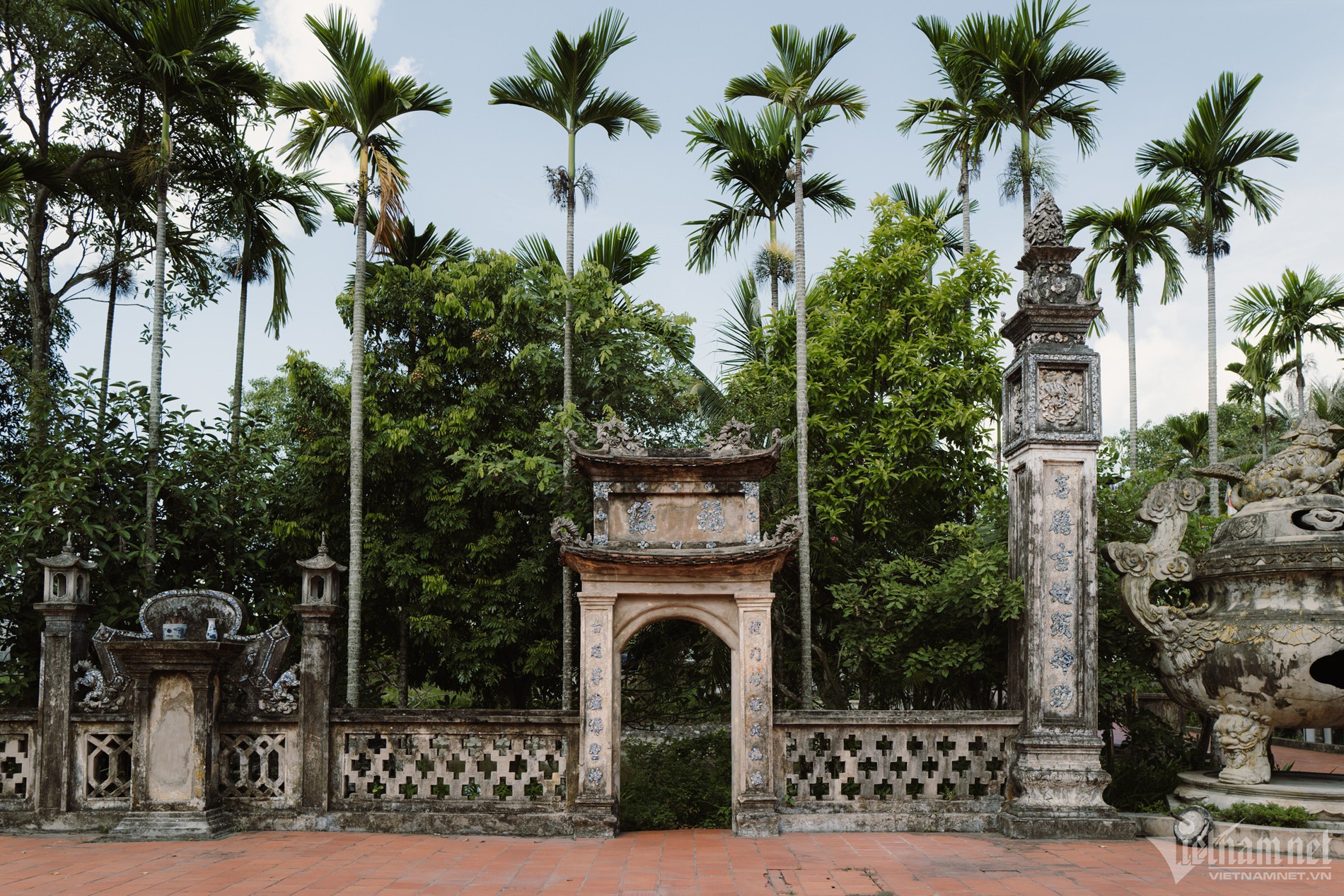 co le pagoda.jpg2.jpg
co le pagoda.jpg2.jpg
18. What Role Does the Bell Play in Local Festivals and Ceremonies?
Although the giant bell at Co Le Pagoda, Dai Hong Chung, is not rung, it still plays a significant role in local festivals and ceremonies as a powerful symbol of cultural heritage and spiritual identity. The bell’s presence serves as a constant reminder of the pagoda’s rich history and the community’s enduring faith.
During festivals, such as the annual Co Le Pagoda Festival commemorating Saint Nguyen Minh Khong, the bell is often adorned with flowers and decorations, highlighting its importance. Monks and devotees pay homage to the bell, offering prayers and performing rituals that acknowledge its sacred status. The bell serves as a backdrop for various ceremonies and processions. Its imposing size and historical significance add a sense of solemnity and reverence to these events. Local storytellers and guides often share the bell’s history and the tale of its wartime preservation, reinforcing its cultural significance for both residents and visitors.
19. How Does SIXT.VN Enhance the Experience of Visiting Co Le Pagoda?
SIXT.VN enhances the experience of visiting Co Le Pagoda by providing comprehensive and convenient travel solutions tailored to meet the needs of modern travelers. Understanding the challenges that visitors face when planning a trip to Vietnam, SIXT.VN offers a range of services designed to ensure a seamless and enriching experience.
Firstly, SIXT.VN provides reliable and comfortable transportation options, including private car rentals and airport transfer services from Hanoi. This eliminates the stress of navigating public transportation or finding local taxis. For those seeking a hassle-free experience, SIXT.VN offers expertly curated tour packages that include transportation, accommodation, and guided tours to Co Le Pagoda. These packages ensure that visitors can fully immerse themselves in the cultural and historical significance of the site without worrying about logistics. SIXT.VN assists with booking accommodations in Nam Dinh and nearby areas, offering a variety of options to suit different budgets and preferences. Local experts provide valuable insights and recommendations, helping visitors discover hidden gems and make the most of their trip.
20. What Are the Travel Tips for Visiting Co Le Pagoda?
To make the most of your visit to Co Le Pagoda, consider these essential travel tips that will help you navigate the cultural nuances and logistical aspects of your trip.
Planning Your Visit:
- Best Time to Visit: The ideal time to visit is during the Co Le Pagoda Festival, held from the 13th to the 16th day of the ninth lunar month, to experience traditional ceremonies and cultural performances.
- Transportation: From Hanoi, you can hire a private car or take a bus to Nam Dinh. Local taxis and buses are available within Nam Dinh to reach the pagoda.
- Accommodation: Book your accommodation in advance, especially if visiting during the festival, as hotels and guesthouses tend to fill up quickly.
Cultural Etiquette:
- Dress Modestly: When visiting the pagoda, dress respectfully by covering your shoulders and knees.
- Remove Shoes: Remove your shoes before entering the main prayer halls.
- Be Respectful: Maintain a quiet and respectful demeanor while on the pagoda grounds.
- Photography: Ask for permission before taking photographs of monks or religious ceremonies.
Practical Tips:
- Stay Hydrated: Carry water with you, especially during the hotter months.
- Carry Cash: While some places may accept credit cards, it’s advisable to have cash for smaller establishments and local transportation.
- Learn Basic Vietnamese Phrases: Knowing a few basic phrases can enhance your interactions with locals.
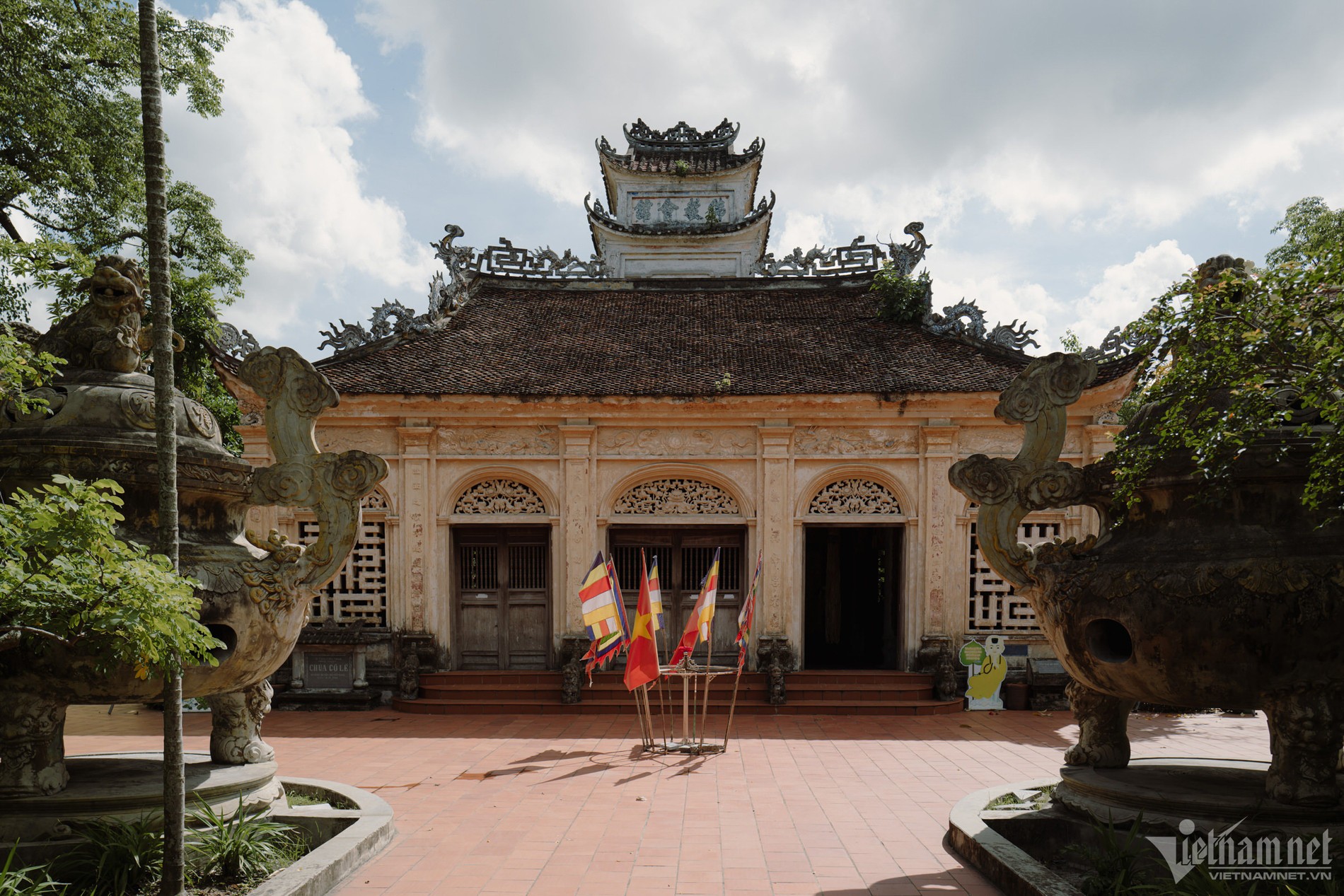 co le pagoda.jpg3.jpg
co le pagoda.jpg3.jpg
21. Can You Describe the Interior of Co Le Pagoda?
The interior of Co Le Pagoda is a captivating blend of traditional Vietnamese Buddhist elements and unique architectural influences, creating a spiritually enriching and visually stunning space. As you step inside, you’ll notice the layout adheres to the traditional “Tien Phat, Hau Thanh” design, with Buddha statues prominently displayed in the front and altars dedicated to local saints in the rear.
The walls are adorned with vibrant frescoes, reminiscent of those found in Gothic cathedrals, depicting scenes from Buddhist mythology and Vietnamese history. These colorful murals add a sense of grandeur and artistic depth to the interior. Vaulted ceilings soar overhead, creating a sense of spaciousness and echoing the architectural styles of European cathedrals. Intricate carvings and reliefs decorate the walls and ceilings, showcasing the skill and craftsmanship of local artisans. The interior is filled with statues of various Buddhas, Bodhisattvas, and other revered figures, each meticulously crafted and adorned with gold leaf.
22. How Has Co Le Pagoda Influenced Other Pagodas in Vietnam?
Co Le Pagoda has significantly influenced other pagodas in Vietnam through its unique architectural style and its role as a cultural and spiritual landmark. The pagoda’s innovative blend of Eastern and Western architectural elements has inspired other religious sites to incorporate diverse design influences, creating a more eclectic and visually appealing aesthetic.
The “Tien Phat, Hau Thanh” layout, which honors both Buddha and local saints, has been adopted by other pagodas seeking to blend traditional Buddhist practices with local customs and beliefs. The vibrant frescoes adorning the walls of Co Le Pagoda have encouraged other pagodas to enhance their interiors with colorful murals depicting scenes from Buddhist mythology and Vietnamese history. Co Le Pagoda’s preservation efforts and recognition as a National Architectural Heritage Site have set a standard for other pagodas, promoting the importance of preserving cultural and historical landmarks for future generations.
23. What Are the Most Unique Architectural Features of Co Le Pagoda?
Co Le Pagoda is renowned for its unique architectural features that blend traditional Vietnamese elements with Gothic influences, creating a distinctive and captivating sacred space. One of the most striking features is the Nine-Story Lotus Tower, standing 32 meters tall and constructed with nine stacked lotus petals, symbolizing the nine celestial realms in Buddhist cosmology.
The pagoda’s layout follows the traditional “Tien Phat, Hau Thanh” design, honoring both Buddha and local saints, which is a common feature in Vietnamese pagodas but uniquely integrated with other architectural styles. Vaulted ceilings and colorful frescoes, reminiscent of Gothic cathedrals, adorn the main halls, adding a sense of grandeur and artistic depth to the interior. Intricate carvings and reliefs decorate the walls and ceilings, showcasing the skill and craftsmanship of local artisans. The giant bell, Dai Hong Chung, though not rung, is a prominent symbol of the pagoda’s history and cultural significance, adding to its unique appeal.
24. How Can Visitors Contribute to the Preservation of Co Le Pagoda?
Visitors can contribute to the preservation of Co Le Pagoda in several meaningful ways, helping to ensure that this cultural and historical landmark remains vibrant for future generations. One of the most direct ways to contribute is by making donations to the pagoda. These funds can be used for maintenance, restoration, and other preservation activities.
Supporting local businesses and vendors around the pagoda helps to boost the local economy and encourages the community to take pride in preserving their heritage. Respecting the cultural etiquette of the pagoda is crucial. This includes dressing modestly, removing shoes before entering prayer halls, and maintaining a quiet and respectful demeanor. Spreading awareness about Co Le Pagoda by sharing your experiences and photos on social media can attract more visitors and supporters, increasing the pagoda’s visibility. Volunteering your time to assist with preservation efforts, such as cleaning or light maintenance, can provide valuable support to the pagoda.
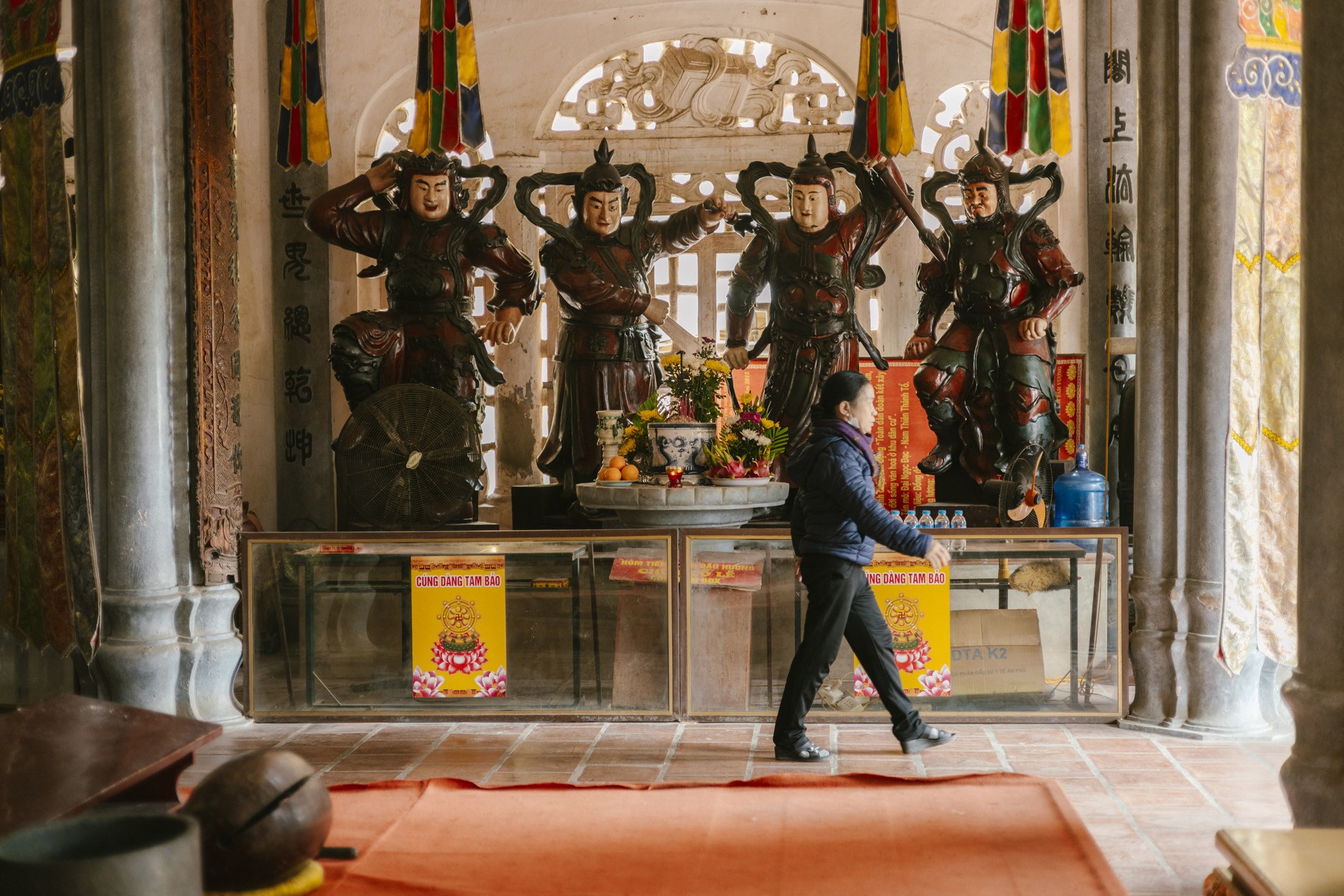 co le pagoda.jpg4.jpg
co le pagoda.jpg4.jpg
25. What Are the Lesser-Known Stories or Legends Associated with Co Le Pagoda?
Co Le Pagoda is rich in history and lesser-known stories that add to its mystique and cultural significance. One intriguing legend revolves around the construction of the Nine-Story Lotus Tower. It is said that the tower was built using only traditional materials like lime, bricks, sand, molasses, and salt, completely avoiding modern materials like cement and steel. This feat of engineering is attributed to the ingenuity and resourcefulness of local artisans.
Another story involves the giant bell, Dai Hong Chung. According to local lore, the bell was submerged in a lake not only to protect it from war but also because it was believed to possess mystical powers. Some say that the bell could only be retrieved by someone of pure heart and unwavering faith. There is a tale about a hidden underground tunnel that connects Co Le Pagoda to other nearby temples. This tunnel was supposedly used during times of conflict to transport people and valuable artifacts safely.
26. Are There Any Other Significant Artifacts Besides the Giant Bell at Co Le Pagoda?
Yes, besides the renowned giant bell, Dai Hong Chung, Co Le Pagoda houses several other significant artifacts that contribute to its rich cultural and historical tapestry. The Nine-Story Lotus Tower, standing at 32 meters, is a prominent architectural marvel and houses various religious relics and artifacts within its different levels.
The pagoda features numerous statues of Buddhas, Bodhisattvas, and other revered figures, each intricately crafted and holding deep spiritual significance. Ancient scriptures and texts, written in Vietnamese and other languages, are preserved within the pagoda, offering insights into the history and teachings of Buddhism. The frescoes adorning the walls of the pagoda depict scenes from Buddhist mythology, Vietnamese history, and local legends, providing a visual record of the region’s cultural heritage.
27. How Does Co Le Pagoda Compare to Other Famous Pagodas in Vietnam?
Co Le Pagoda stands out among other famous pagodas in Vietnam due to its unique blend of architectural styles and its significant cultural and historical artifacts. While many pagodas in Vietnam adhere strictly to traditional Vietnamese or Chinese architectural designs, Co Le Pagoda uniquely combines these elements with Gothic influences.
Compared to the Perfume Pagoda, known for its natural cave setting and pilgrimage traditions, Co Le Pagoda is distinguished by its architectural innovation and the historical significance of its giant bell. Unlike the One Pillar Pagoda in Hanoi, which is famous for its unique structure, Co Le Pagoda offers a more expansive complex with multiple significant features, including the Nine-Story Lotus Tower. The Jade Emperor Pagoda in Ho Chi Minh City, renowned for its intricate statues and Taoist influences, differs from Co Le Pagoda in its religious syncretism and urban setting.
28. What Is the Role of Buddhism in the Daily Life of the Community Around Co Le Pagoda?
Buddhism plays a central role in the daily life of the community surrounding Co Le Pagoda, influencing their values, traditions, and social interactions. Many residents begin their day with prayers and offerings at home shrines, seeking blessings for themselves and their families. Monks from Co Le Pagoda often conduct ceremonies and rituals for local families, such as weddings, funerals, and house blessings, providing spiritual guidance and support.
The teachings of Buddhism, emphasizing compassion, mindfulness, and ethical conduct, guide the community’s interactions and decision-making. Local businesses often incorporate Buddhist principles into their operations, promoting honesty, fairness, and community welfare. The Co Le Pagoda Festival is a major event that brings the community together, celebrating their shared faith and cultural heritage through traditional ceremonies and cultural performances. Buddhism fosters a strong sense of community among local residents, encouraging cooperation, mutual support, and collective responsibility.
29. How Does the Location of Co Le Pagoda Contribute to Its Significance?
The location of Co Le Pagoda significantly contributes to its cultural, historical, and spiritual importance, enhancing its role as a central landmark in the region. Situated in Nam Dinh province, which boasts a rich agricultural heritage, the pagoda benefits from a tranquil and picturesque setting amidst rice paddies and rural landscapes.
Its proximity to Hanoi, approximately 90 kilometers away, allows it to attract a steady stream of visitors seeking to escape the urban bustle and immerse themselves in a more serene and culturally authentic environment. Being located in a region with a strong Buddhist tradition, Co Le Pagoda serves as a focal point for religious activities and spiritual practices, drawing devotees from nearby villages and towns. The pagoda’s position near the Red River Delta, a cradle of Vietnamese civilization, connects it to a long and storied history.
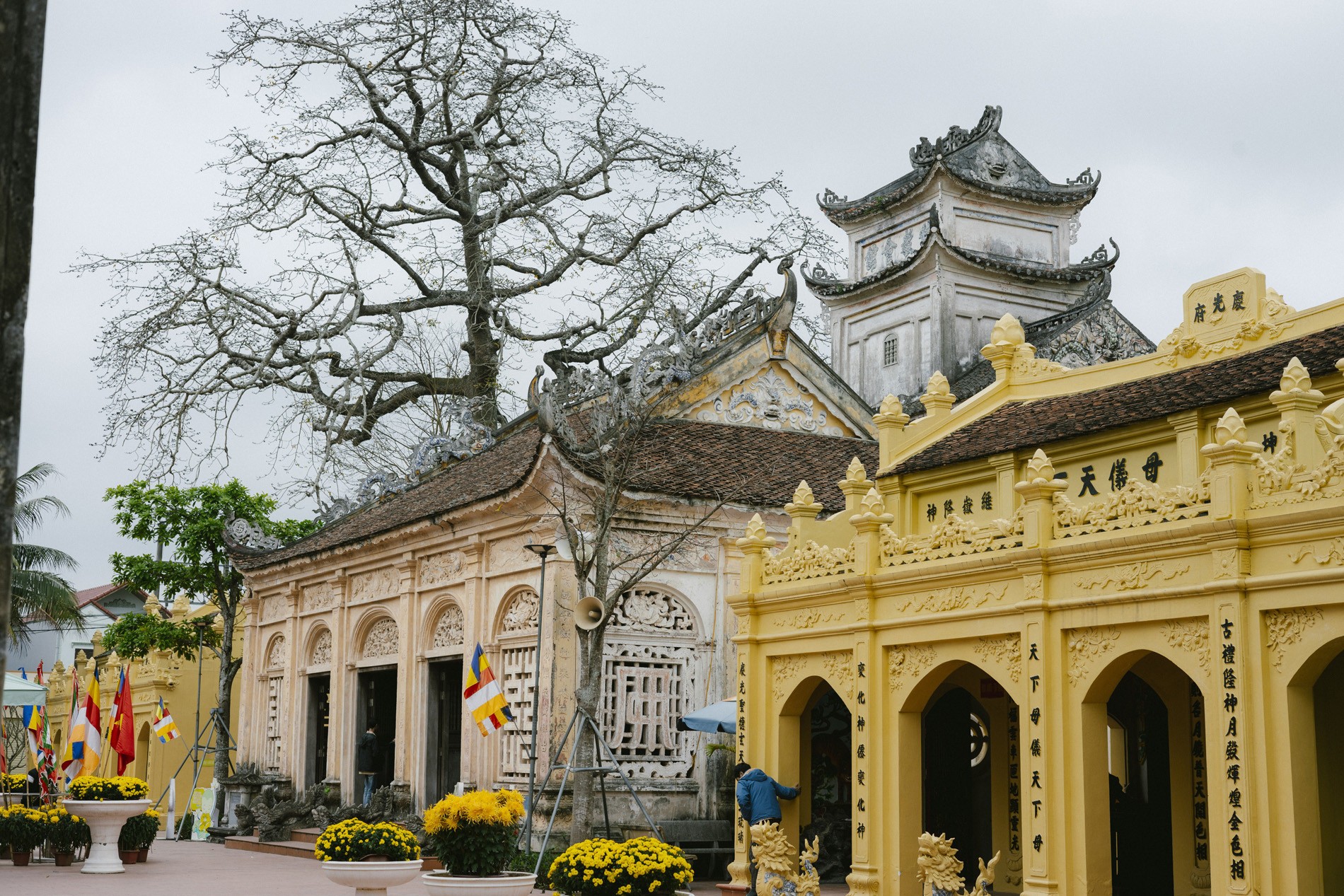 co le pagoda.jpg5.jpg
co le pagoda.jpg5.jpg
30. What Are the Future Plans for Co Le Pagoda and Its Preservation?
The future plans for Co Le Pagoda and its preservation focus on enhancing its cultural significance, ensuring its structural integrity, and promoting sustainable tourism. There are ongoing efforts to restore and maintain the pagoda’s architectural features, including the Nine-Story Lotus Tower, frescoes, and intricate carvings, using traditional techniques and materials.
Plans are in place to improve the infrastructure around the pagoda, including visitor facilities, access roads, and parking areas, to enhance the overall visitor experience. There are initiatives to promote cultural tourism and educational programs, offering visitors a deeper understanding of the pagoda’s history, architecture, and spiritual significance. The pagoda management aims to implement sustainable tourism practices to minimize the environmental impact of tourism and protect the surrounding ecosystem. Collaborations with local communities are being strengthened to involve them in the preservation efforts and ensure that the pagoda continues to serve as a source of pride and identity for the region.
Ready to explore the wonders of Vietnam? With SIXT.VN, planning your trip is effortless. From airport transfers to curated tour packages, we ensure a seamless and unforgettable experience.
FAQ about Co Le Pagoda and the Giant Bell
1. Where is Co Le Pagoda located?
Co Le Pagoda is located in Nam Dinh province, approximately 90 kilometers southeast of Hanoi, Vietnam.
2. What is the significance of the giant bell at Co Le Pagoda?
The giant bell, known as Dai Hong Chung, symbolizes the community’s devotion, resilience, and cultural heritage.
3. How tall is the Nine-story Lotus Tower at Co Le Pagoda?
The Nine-story Lotus Tower stands at 32 meters tall.
4. What architectural styles are blended in Co Le Pagoda?
Co Le Pagoda uniquely blends traditional Vietnamese Buddhist architecture with Gothic influences.
5. When is the Co Le Pagoda Festival held?
The Co Le Pagoda Festival is held from the 13th to the 16th day of the ninth lunar month.
6. What materials were used to construct the giant bell?
The bell was primarily constructed using bronze, with the addition of gold jewelry donated by Buddhist followers.
7. Why was the giant bell submerged in a lake during the war?
The bell was submerged to protect it from potential destruction or confiscation by enemy forces.
8. How can visitors contribute to the preservation of Co Le Pagoda?
Visitors can contribute by making donations, supporting local businesses, respecting cultural etiquette, and spreading awareness.
9. What other significant artifacts are housed at Co Le Pagoda?
Besides the giant bell, Co Le Pagoda houses the Nine-story Lotus Tower, various Buddha statues, ancient scriptures, and intricate frescoes.
10. How can SIXT.VN enhance my visit to Co Le Pagoda?
SIXT.VN provides reliable transportation, curated tour packages, accommodation assistance, and valuable local insights to ensure a seamless and enriching experience.
Let SIXT.VN be your trusted companion in discovering the magic of Vietnam. Visit our website today and start planning your dream trip! Address: 260 Cau Giay, Hanoi, Vietnam. Hotline/Whatsapp: +84 986 244 358. Website: SIXT.VN.
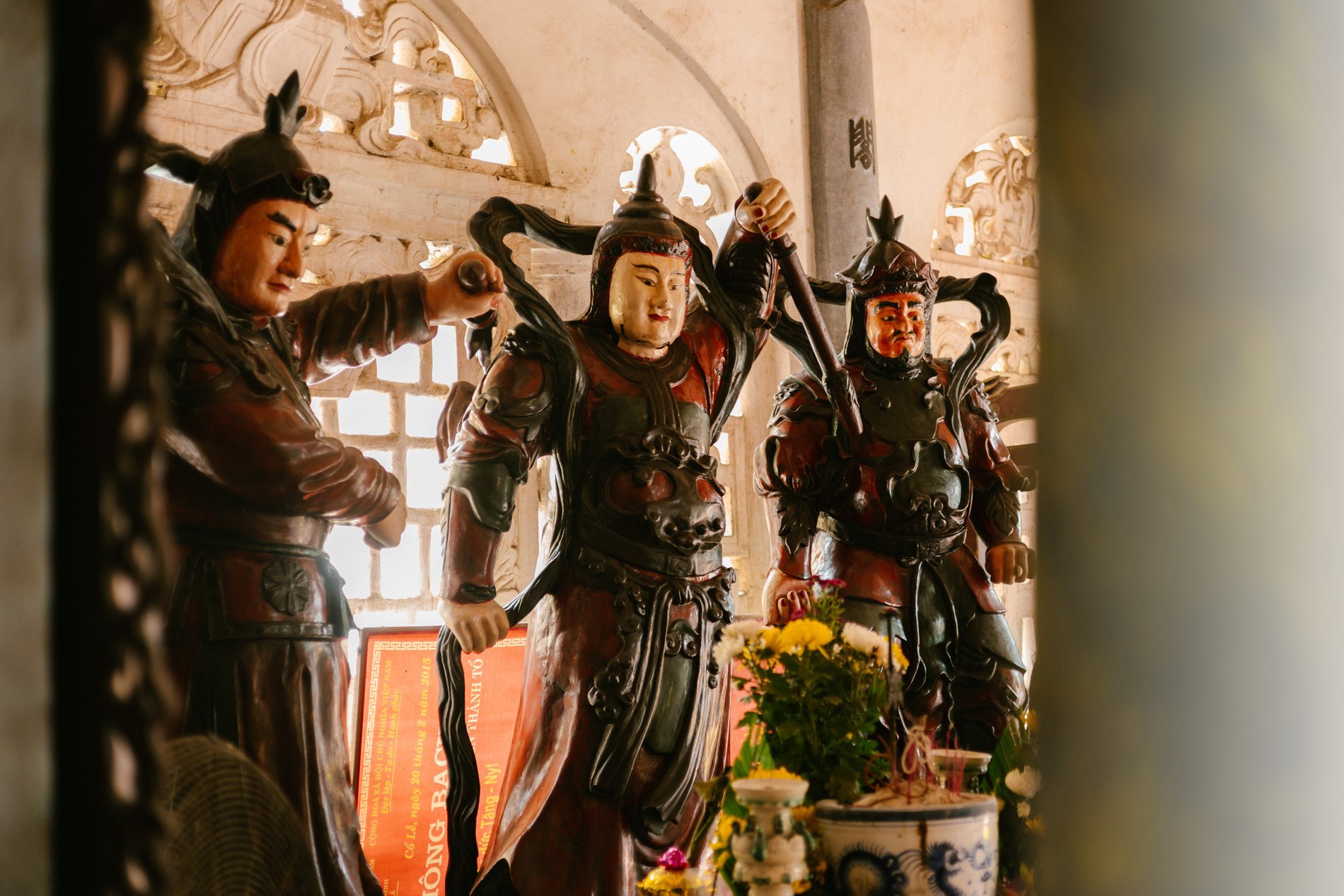 co le pagoda.jpg6.jpg
co le pagoda.jpg6.jpg
 co le pagoda.jpg7.jpg
co le pagoda.jpg7.jpg
Co Le Pagoda has a unique architecture that blends Eastern and Western cultures, creating a harmonious and visually stunning landmark.
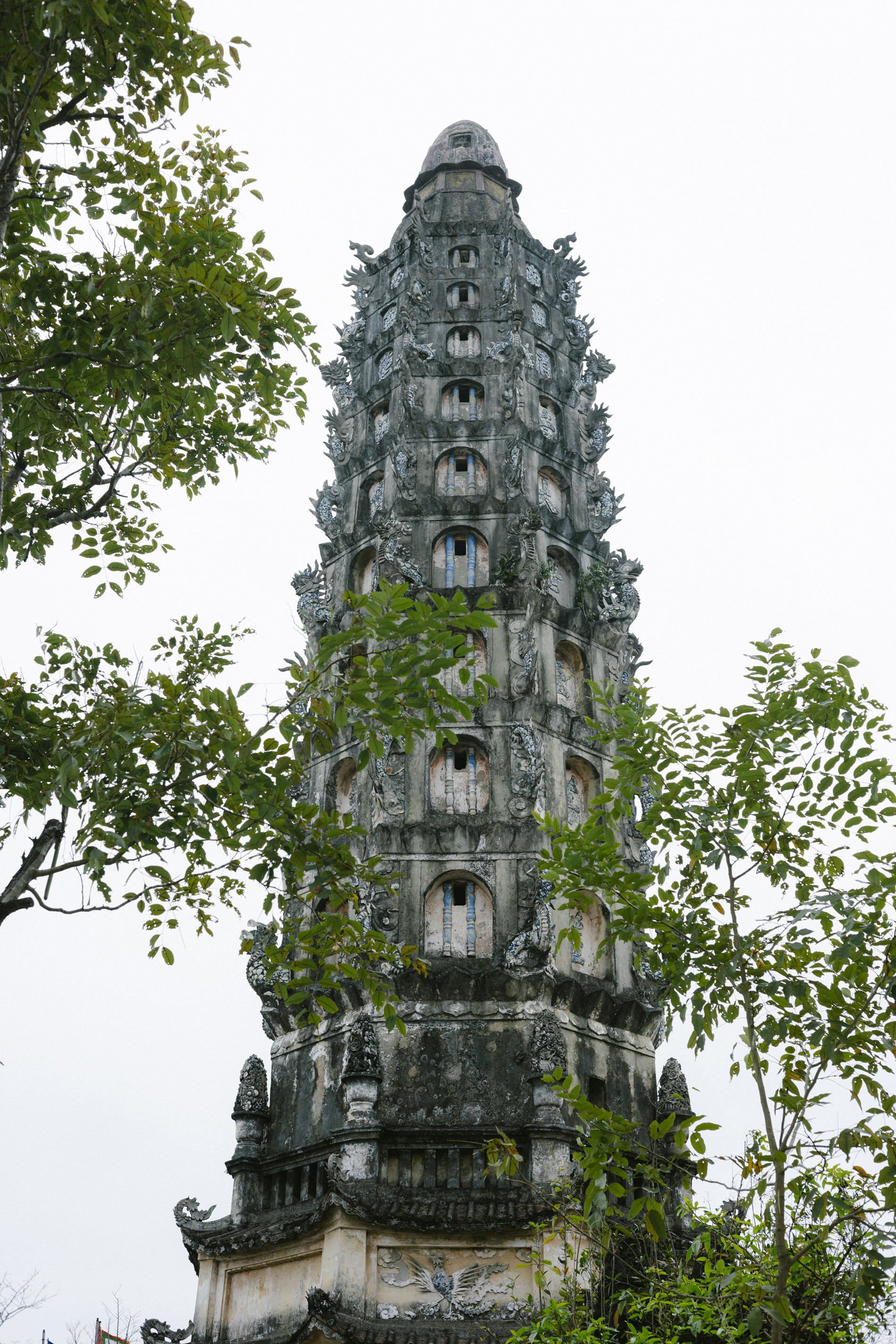 co le pagoda.jpg8.jpg
co le pagoda.jpg8.jpg
The Cuu Pham Lien Hoa Tower at Co Le Pagoda features a staircase with 98 spiral steps leading to the top, offering panoramic views.
 co le pagoda.jpg9.jpg
co le pagoda.jpg9.jpg
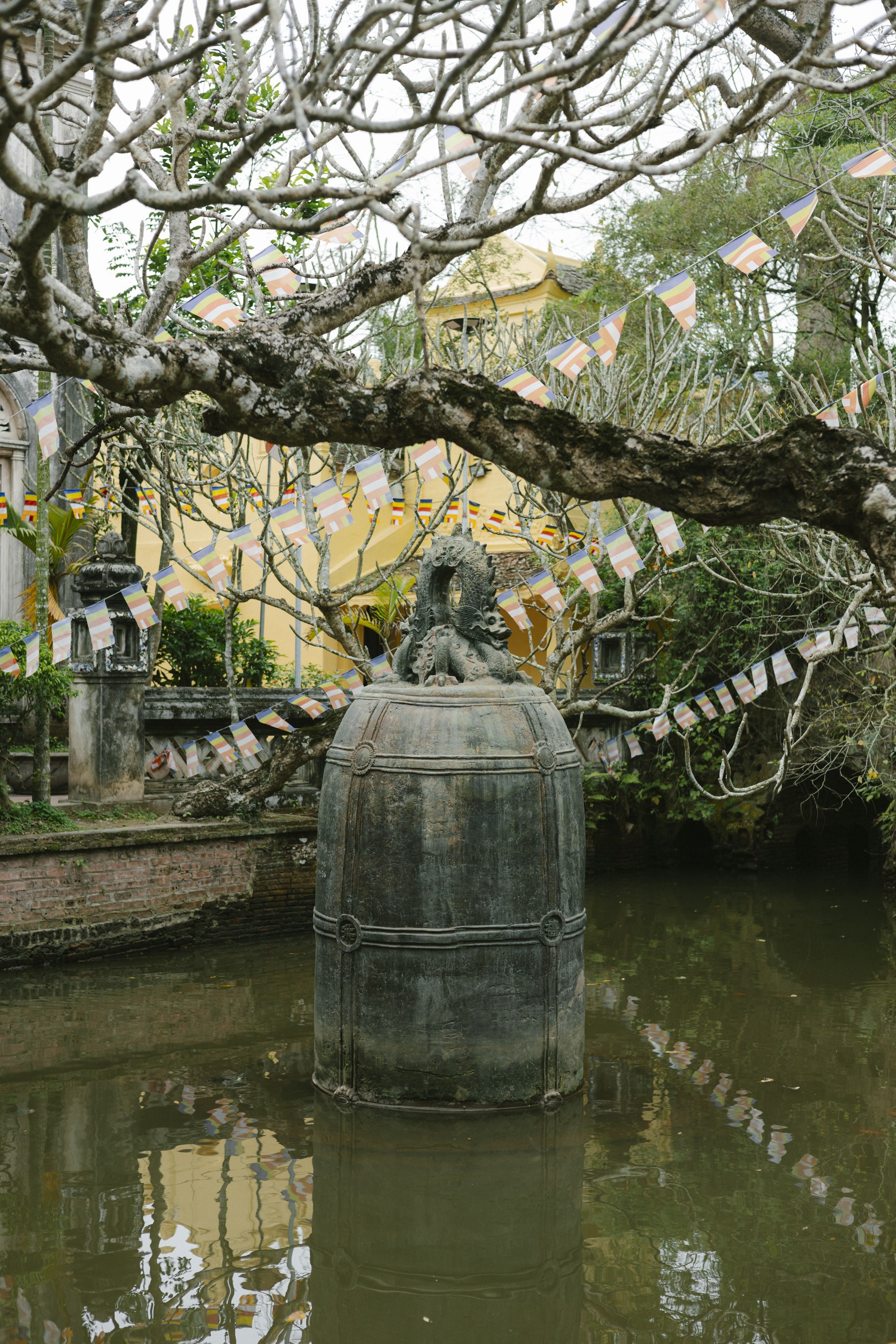 co le pagoda.jpg10.jpg
co le pagoda.jpg10.jpg
The bell stands 4.2 meters tall, has a diameter of 2.2 meters, and a thickness of 8 cm, making it one of the largest bells in Vietnam.



